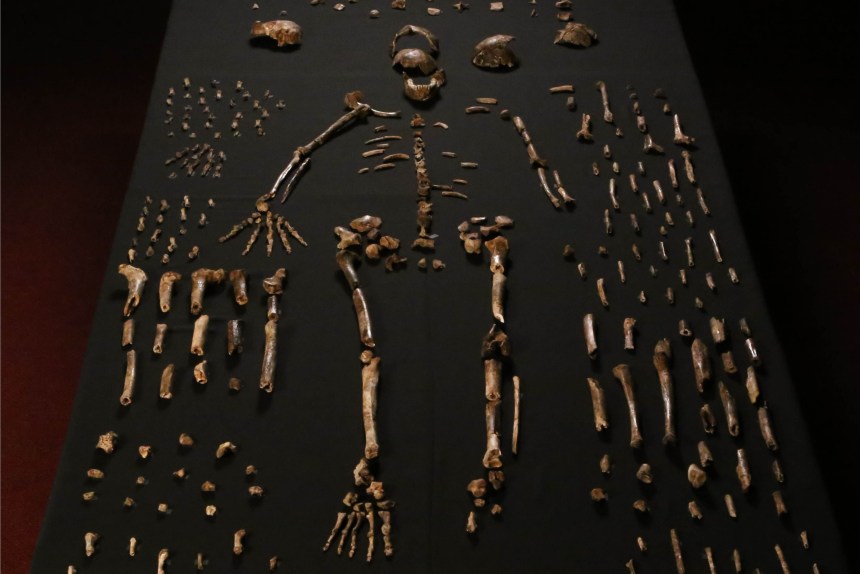Fossil remains of new hominin species Homo naledi discovered in South Africa

Paleontologists have discovered the fossil remains of a new hominin species in a dark cave system in South Africa and published their preliminary results in eLife. The new species has been named Homo naledi, which means “star man” in Sotho, after the Dinaledi Chamber of the Rising Star cave system where it was found. Homo naledi is characterized by a small body and brain size, but it also features several adaptations of the hands and feet that are relatively similar to modern humans. The age of Homo naledi and its position in the phylogenetic tree of hominins is still unresolved, but it is believed to be one of the more primitive ancestors of mankind. So far, an unprecedented 1550 remains of at least 15 individuals of Homo naledi have been unearthed, representing the largest fossil assemblage of a single hominin species ever found in Africa. Given the richness and exceptional preservation state of these fossils, it is speculated that Homo naledi may have been capable of performing primitive burial rites.
Journal references:
Berger, L. R., Hawks, J., de Ruiter, D. J., Churchill, S. E., Schmid, P., Delezene, L. K., … & Zipfel, B. (2015). Homo naledi, a new species of the genus Homo from the Dinaledi Chamber, South Africa. eLife, 4, e09560.
Dirks, P. H., Berger, L. R., Roberts, E. M., Kramers, J. D., Hawks, J., Randolph-Quinney, P. S., … & Tucker, S. (2015). Geological and taphonomic context for the new hominin species Homo naledi from the Dinaledi Chamber, South Africa. eLife, 4, e09561.
Image: Fossil remains of Homo naledi, the new hominin species discovered in South Africa. Source: Lee Berger, Wikimedia Commons.
